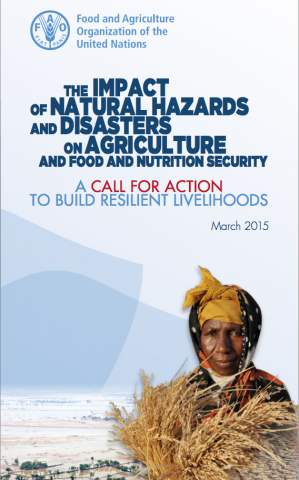The Impact of Natural Hazards and Disasters on Agriculture and Food and Nutritions Security: A Call for Action to Build Resilient Livelihoods


There is a critical information gap in terms of the quantitative economic impact of disasters on agriculture and on the livelihoods and food security of populations affected. FAO has undertaken a study to help fill this information gap, and to quantify where possible the impact of natural hazards on the agriculture sector in developing countries over the past decade. This brochure presents the first preliminary findings of the study.
The goal of FAO’s study is to contribute to a better understanding of disaster impact on the sector and help inform appropriate sector–specific disaster risk reduction (DRR) policies and financial investments that build resilience in agriculture and livelihoods. Resilience is understood as the ability to prevent disasters and crises, and to anticipate, absorb, accommodate or recover from them in a timely, efficient and sustainable manner. This includes protecting, restoring and improving food and agricultural systems under threats that impact food and nutrition security, agriculture, and/or food safety/public health.
Ultimately, the adoption of agricultural technologies that help prevent, mitigate or reduce the underlying risks needs to be informed by a clear understanding of the way in which disasters impact on crop, livestock, fisheries or forestry production, or the type of hazards which have the greatest impact on each sub–sector. It requires a better understanding of how disasters compromise food and nutrition security, sector growth and national economies.
FAO, 2015.
The Impact of Natural Hazards and Disasters on Agriculture and Food and Nutritions Security: A Call for Action to Build Resilien
http://www.fao.org/3/a-i4434e.pdf
